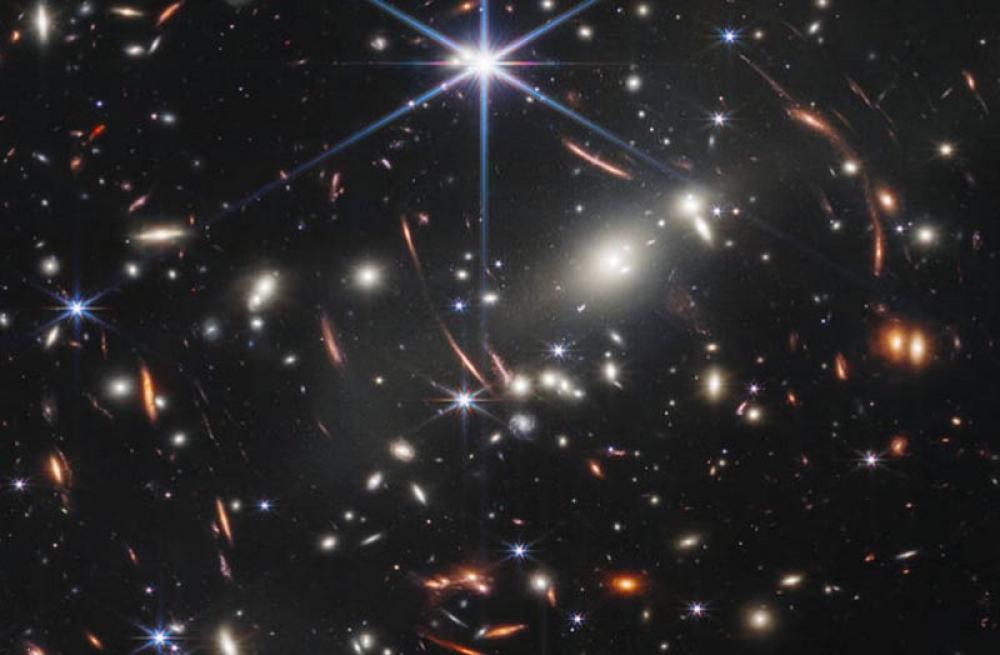Just Earth News | @justearthnews | 11 Jul 2022, 09:24 pm Print
 NASA
NASA NASA website
Washington: NASA’s James Webb Space Telescope has produced the deepest and sharpest infrared image of the distant universe to date.
Known as Webb’s First Deep Field, this image of galaxy cluster SMACS 0723 is overflowing with detail.
Thousands of galaxies – including the faintest objects ever observed in the infrared – have appeared in Webb’s view for the first time. This slice of the vast universe covers a patch of sky approximately the size of a grain of sand held at arm’s length by someone on the ground.
This deep field, taken by Webb’s Near-Infrared Camera (NIRCam), is a composite made from images at different wavelengths, totaling 12.5 hours – achieving depths at infrared wavelengths beyond the Hubble Space Telescope’s deepest fields, which took weeks.
The image shows the galaxy cluster SMACS 0723 as it appeared 4.6 billion years ago, read the NASA website.
The combined mass of this galaxy cluster acts as a gravitational lens, magnifying much more distant galaxies behind it. Webb’s NIRCam has brought those distant galaxies into sharp focus – they have tiny, faint structures that have never been seen before, including star clusters and diffuse features.
Researchers will soon begin to learn more about the galaxies’ masses, ages, histories, and compositions, as Webb seeks the earliest galaxies in the universe.
- Spanish tourist stabbed at Berlin Holocaust Memorial testifies in terror trial
- Germany arrests two Iraqi nationals over suspected Islamic State links
- Sexual content creation: Over 120,000 home cameras hacked in South Korea, four arrested
- Samsung India unveils the Galaxy Tab A11+ — And it might be the best value tablet of the year!
- Samsung unveils world’s first AI Trifold phone — The specs will leave you stunned



-1763561110.jpg)


